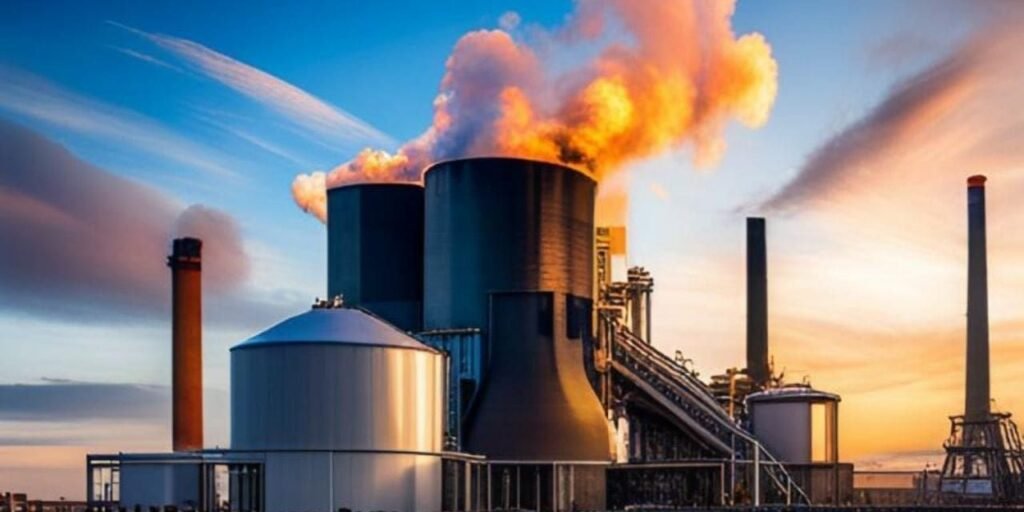
The report “Carbonization Furnace Market by Type (Countinous carbonization furnace), Feed Stock (Agricultural waste, Forestry waste, Nutshell waste), Capacity (<1000 kg/h, 1000-2000 kg/h), Application (Charcoal, Wood Vinegar, Tar), Region – Global Forecast to 2029” is projected to grow from USD 263 million in 2024 to USD 425 million by 2029, at a CAGR of 10.1%. Several important drivers are driving the carbonization furnace market, including a growing worldwide focus on sustainability, technical developments, expanded applications, economic incentives, and an emphasis on waste management and the circular economy.
Download PDF Brochure.
Browse
The “Carbonization Furnace Market – Global Forecast to 2029” report includes 253 market data tables, 60 figures, 264 pages, and a detailed table of contents.
Some of the noteworthy significant players include:
· GreenPower Limited (Europe)
· Beston Group Co., Ltd. (China).
· Zhengzhou Shuliy Machinery Co. Ltd (China)
· Tianjin Mikim Technique Co., Ltd. (China)
· Henan Chengjinlai Machinery Co., Ltd. (China)
· Gongyi Xiaoyi Mingyang Machinery Plant (China)
· Gongyi Sanjin Charcoal Machinery Factory (China)
· Zhengzhou Jiutian Machinery Equipment Co., Ltd. (China)
· Henan Sunrise Biochar Machine Co. Ltd (China)
Carbon sequestration and climate change mitigation are key drivers.
The rising demand for biochar carbonization furnaces stems from their potential for carbon sequestration and climate change mitigation. These specialized reactors allow for the controlled pyrolysis of biomass feedstock, such as agricultural wastes, forestry waste, and organic municipal solid waste, to make biochar in a controlled setting. Biochar carbonization furnaces operate under oxygen-limited conditions, preventing full combustion of biomass, enhancing biochar produce while reducing greenhouse gas emissions such as carbon dioxide and methane. When biomass is turned to biochar via pyrolysis, around half of the carbon is released as CO2. However, the leftover biochar is significantly more stable and degrades much slower than raw biomass. This causes a net increase in soil carbon reserves over time. Unlike ordinary biomass breakdown, which emits carbon dioxide into the atmosphere, pyrolysis stabilizes the carbon and embeds it in biochar, therefore greatly helping to climate change mitigation. When mixed with soil, biochar can remain stable for hundreds to thousands of years, effectively sequestering carbon and lowering the overall carbon footprint. It is projected that biochar systems can reduce anthropogenic CO2, CH4, and N2O emissions by up to 1.8 Pg CO2 equivalent per year, or 12%, without jeopardizing food security or the environment.
Request sample pages.
Based on capacity, more than 3000 kg/h are expected to account for the second highest share of the Carbonization Furnace market.
The >3000 kg/h capacity category accounts for the second largest share of the carbonization furnace market, owing to its popularity among medium to large-scale industrial businesses with huge production volumes. These high-capacity furnaces are crucial for companies that create a lot of biomass waste, such forestry, agriculture, and municipal waste management, which require efficient and large-scale processing. The capacity to handle more than 3000 kg/h allows for continuous, large-batch processing, which boosts productivity and operational efficiency. Furthermore, developments in furnace technology have made these high-capacity systems more energy efficient and cost-effective, hastening their adoption.
Europe is predicted to be the second-largest market throughout the projection period.
Europe has the second-largest market share in the carbonization furnace business, thanks to a focus on environmental sustainability, advanced technological capabilities, and favorable legal frameworks. The European Union’s strict carbon emissions restrictions and renewable energy objectives stimulate the use of carbonization technology to generate biochar and charcoal, which help with carbon sequestration and waste management. European nations also benefit from significant R&D investments, which result in improvements in carbonization boiler design and efficiency. Furthermore, the region’s strong industrial basis and commitment to circular economy principles guarantee that carbonization processes are integrated into a wide range of businesses, including agriculture, waste management, and energy generation. Government incentives, subsidies, and financing schemes help to accelerate the use of carbonization technology, positioning Europe as a market leader. These characteristics contribute to Europe’s considerable share of the carbonization furnace market, which is second only to North America.
Make an enquiry.
Download the PDF for Top Related Reports on the Equipment, Machine, and Tooling Industry.
Heat Exchangers Market
· Agrochemical Tanks Market
· Lithium-ion Battery Recycling Market
· Waste Heat Recovery Systems Market
· Packaging Machines Market
